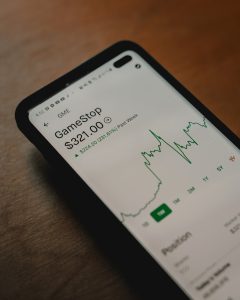Relative Strength Index (RSI) is one of the most popular technical indicators used by traders in the Forex market. It is a momentum oscillator that measures the speed and change of price movements. RSI is a versatile indicator that can be used in different ways to spot trends, identify overbought and oversold conditions, and generate trading signals. In this article, we will explain how to use the RSI indicator in Forex trading and how to interpret its signals.
What is Relative Strength Index (RSI)?
The RSI indicator was developed by J. Welles Wilder Jr. in the late 1970s. It is a bounded oscillator that ranges from 0 to 100. The RSI is calculated by comparing the average gains and losses over a certain period of time. The formula for RSI is:
RSI = 100 – (100 / (1 + RS))
Where RS is the average gain divided by the average loss over a certain period of time. The default period for RSI is 14, which means it calculates the average gains and losses over the last 14 candles. The RSI oscillator moves between 0 and 100, with values above 70 indicating overbought conditions and values below 30 indicating oversold conditions.
How to use RSI in Forex trading?
Traders use RSI in different ways depending on their trading style and strategy. Here are some common ways to use RSI in Forex trading:
1. Spotting trends: RSI can be used to identify the strength of a trend. When the RSI is above 50, it indicates a bullish trend, while when it is below 50, it indicates a bearish trend. Traders can also use the RSI to confirm a trend by looking for divergences between the RSI and the price. A bullish divergence occurs when the price makes a lower low, but the RSI makes a higher low, indicating a potential reversal in the trend. A bearish divergence occurs when the price makes a higher high, but the RSI makes a lower high, indicating a potential reversal in the trend.
2. Identifying overbought and oversold conditions: RSI can be used to identify overbought and oversold conditions. When the RSI is above 70, it indicates an overbought condition, and when it is below 30, it indicates an oversold condition. Traders can use these levels to enter and exit trades. For example, if the RSI is above 70, traders can look for sell signals, and if the RSI is below 30, traders can look for buy signals.
3. Generating trading signals: RSI can be used to generate trading signals. The most common signal is the RSI crossover signal. When the RSI crosses above 50, it generates a bullish signal, and when it crosses below 50, it generates a bearish signal. Traders can also use the RSI crossover with other indicators, such as moving averages or trendlines, to confirm the signal.
4. Setting stop-loss and take-profit levels: RSI can be used to set stop-loss and take-profit levels. Traders can use the overbought and oversold levels to set their stop-loss levels. For example, if the RSI is above 70, traders can set their stop-loss below the resistance level. Traders can also use the RSI to set their take-profit levels by looking for divergences or crossovers with other indicators.
Conclusion
The Relative Strength Index (RSI) is a popular technical indicator used by traders in the Forex market. It is a momentum oscillator that measures the speed and change of price movements. Traders use RSI in different ways depending on their trading style and strategy. RSI can be used to spot trends, identify overbought and oversold conditions, generate trading signals, and set stop-loss and take-profit levels. However, traders should not rely solely on RSI and should always use other indicators and analysis to confirm their trades.





